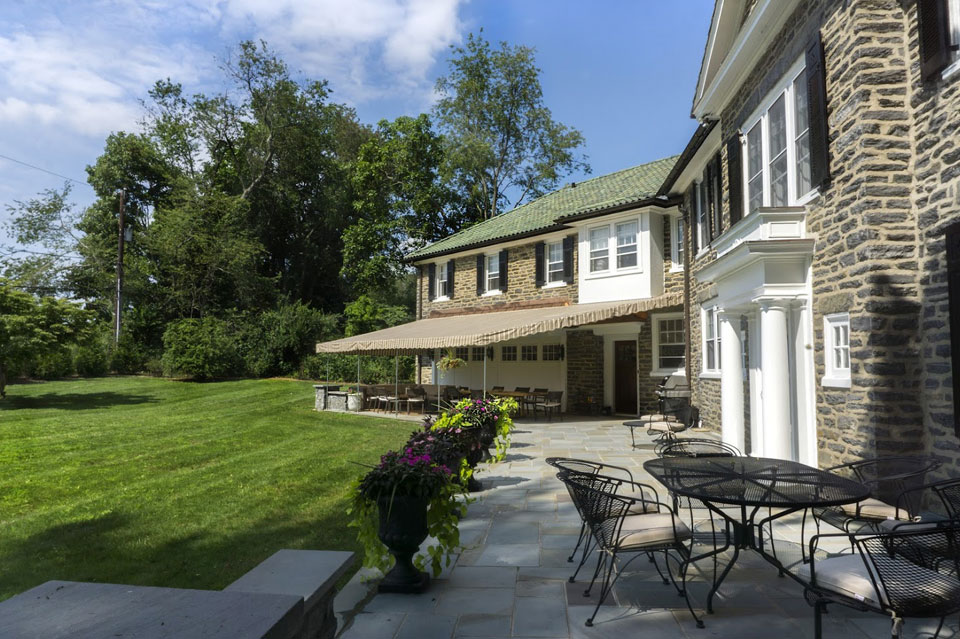Introduction

Imagine having a patio that not only adds a touch of comfort and charm to your home but also becomes your favorite spot for relaxation.
Just like you jazz up your indoor spaces, your outdoor area should be a cozy haven.
Whether you’ve added some greenery or thrown in a few accessories for that extra flair, the key is to be ready for whatever the weather throws your way.
But what happens if you are living in a place like Gladwyne, PA? The place is known for having a charming persona, rustic houses, and luxurious outlook on life. So, if you’re considering adding a patio in your house, it would fit suitably with the vibe of the city.
However, the thing about adding a patio in your house is that you have to maintain it properly. A part of it is winterizing, which is done during the season of… you guessed it right – winter.
How Does Winter Look in Gladwyne?
The season of winter can be quite chilly in Gladwyne.
The temperature here tends to swing between a high of 44°F (7°C) and a low of 29°F (-1°C). So, you can find the sidewalks covered in snow during the months of December and January.
Now, if you have a garden, especially a patio – it might be a little difficult for you to manage and maintain everything all alone. Snowfall can particularly be tough on the paver stones.
Hence, when the ice melts, it often leaves a watery mess on your pathways. And if your concrete spots aren’t sealed up, they might end up with some cracks once winter bids us farewell.
So, if you’re having trouble with winterizing your patio, you can obviously ask for the assistance of an expert from All Seasons Maintenance and Design. But, if you want to do it all by yourself, we have some tips for you in that regard as well.
How to Winterize Your Paver Patio?
Before we get started, let’s address the elephant in the room first.
Maintaining your paver patio isn’t something we’ll suggest a beginner do. It requires proper and eloquent expertise to winterize it, so you might mess it up, even if you don’t want to.
That said, if you decide to hire an expert, it’d still be important to learn about how the procedure usually goes. So, let us tell you a little about that first.
Step – 1: Look for Locking Sand
Keep an eye on your driveway, patio, or walkway to make sure that you have a proper amount of paver sand between the blocks. It will help you avoid heaving, shifting, and resisting washouts.
Decent paver locking can also enable slight movement during thaws and freezes. It, sequentially, will prevent cracks that you might see in asphalt and concrete.
Step – 2: Check the Drainage
The issue of water drainage tends to be important almost any time of the year, especially during the rainy season. However, this can become much more detrimental in winter.
So, if you have any drainage-related problems in your house, try to take care of it as soon as you can. Some of the issues you might want to keep an eye can include the following –
- Downspouts flowing onto the hardscaped surfaces directly
- Water pooling around or on the aforementioned surfaces
- A slope that usually drains back towards your business or house
Step – 3: Apply a Paver Sealer
If you are yet to seal your patio, fall can be an excellent time to take care of it. This can make the paver look much more pristine and help protect the places against de-icing agents effectively.
However, before you apply the paver sealer, make sure to check the instructions written on the package. You can get the help of an expert in this matter too, of course.
As a rule of thumb, most of these require a period between one to two days to set properly. Also, the temperature of the same should be somewhere between 50-degree to 55-degree Celsius.
Step – 4: Use Sand Instead of Salts
Gladwyne usually gets quite cold during the winter season, as we have mentioned before. Hence, a lot of people consider using salt for their patio. But if you don’t want to be limited to a specific time of the year, we’d suggest you use sand instead of it as deicers.
The deicers usually work by forming a brine once you’ve spread them on the surface of the patio. Now, salt offers better performance when melting ice. However, it can also be corrosive for the surface of the paver and damage the concrete over time.
Sand, on the other hand, doesn’t melt ice as effectively as rock salt. But it can offer traction on a paver surface. So, when you walk around on it, your risk of falling becomes low.
Step – 5: Opt for a Plastic-Bladed Shovel
If you’re into using a hardcore metal shovel to clear snow off your driveway, you might want to think twice. Smacking your surface pavers with a metal blade can lead to damage over time for both your pavers and your tools. Just grab a plastic shovel and consider adding a plastic blade to your snowplow or blower – it’s a gentler way to keep your pavers in good shape!
Why Should You Choose ASMD (All Seasons Maintenance and Design)?
With thirty-six years of professional experience, we’ll offer our personal touch while maintaining your patio. Whatever we said before, we will do everything for you to the brim of perfection.
And that will be done without charging you too much.
Also, winterizing isn’t the only thing we can provide you with, though. In addition to it, we will also do the following to take care of the needful for you –
- Hardscaping, walkways, and pathways
- Planting of large and small trees, shrubs and flowers
- Decking pergolas and outdoor seating areas
- Ponds, fountains and gardens
- Outdoor lighting
- Screening
- Irrigation management
All you need to do is give us a call or drop us an email; and we’ll get back to you as soon as possible. We will also talk about the payment and let you know all about our offerings accordingly.

